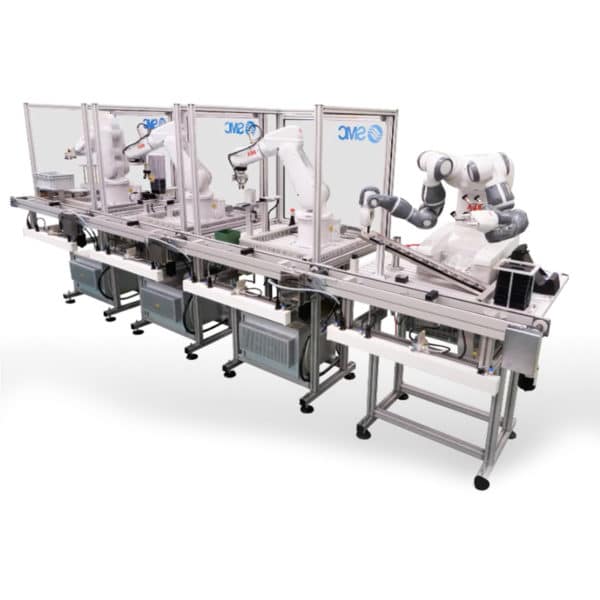Robotics
Robotics classrooms are some of the most exciting classrooms in the schools. Toolkit is proud to bring schools the very best Robotics Training Systems on the market for industry-relevant and fun learning.
Job Outlook
The U.S. Bureau of Labor Statistics (BLS) puts robotics engineers in its category for mechanical engineers. Projections show 9% job market growth, if not more, for the foreseeable future.
Major skills gaps, growing workforce shortages, and increased demand for safe and quality working conditions are only increasing the need and demand for robotics deployment in industry.
Skills Shortage
The need for robotics training at all levels of education is increasingly important. As the demand for robotics increases, and the deployment of robots grows in all sectors of industry, the skills gap grows only wider.
Industry needs well-trained individuals with skills in robotics, troubleshooting, programming, I/O, motor controls, sensors, and critical thinking skills.
Toolkit Robotics Solutions
Our Robotics + Automation training systems bring the exciting fields of industrial automation and robotics to students’ fingertips with real-world, industrially-relevant technologies. Toolkit is proud to offer industry-needed and demanded robot certifications.
We have some of the world’s best and wide-ranging industrial robots, collaborative robots, mobile robots, quadruped ‘dog’ robots, robots for competition, adaptive robot grippers and more!
It wouldn’t be a Toolkit Training System without best-in-class curriculum, digital solutions like simulation software and AR/VR Tools. Ask us today for a free robot consultation!
Showing the single result
-
Robotized Assembly System
SMC’s Robotized Assembly Training System, the RAS-400, allows learners to get a real-world look at fully automated assembly environments featuring your choice of industrial robot(s).
This modular robotized assembly system consists of 4 different industrial robot stations forming a flexible automation cell. The process includes an entire series of
- Feeding
- Material handling
- Assembly verification
- Loading operations
All operations are carried out using components from different technologies (pneumatics, vacuum, sensors, etc.) that students will have to understand and apply. The primary training focus of this training system is industrial robotics, including collaborative robots.


